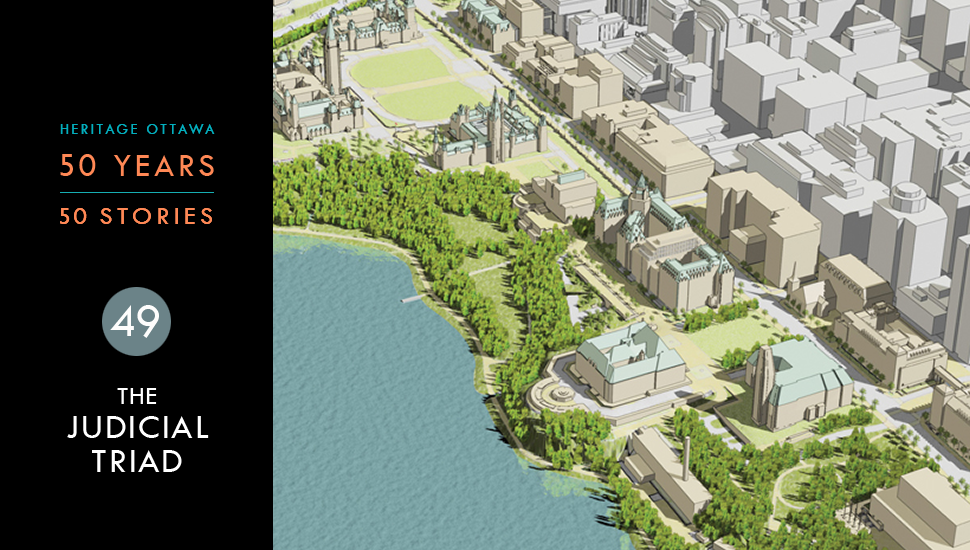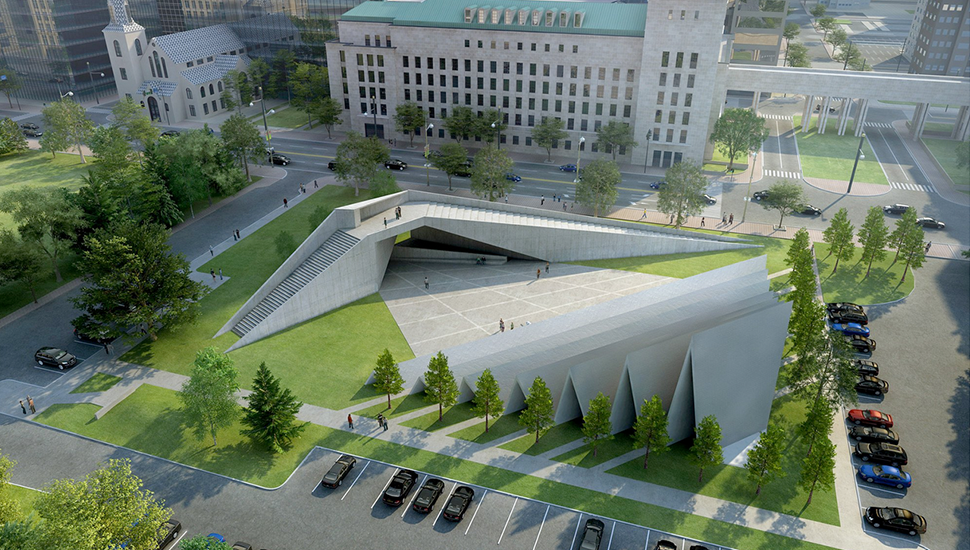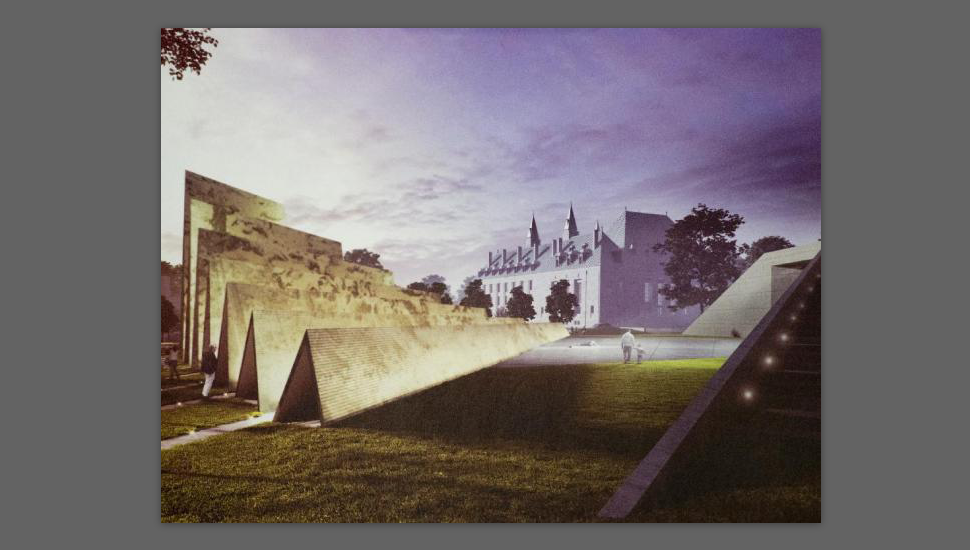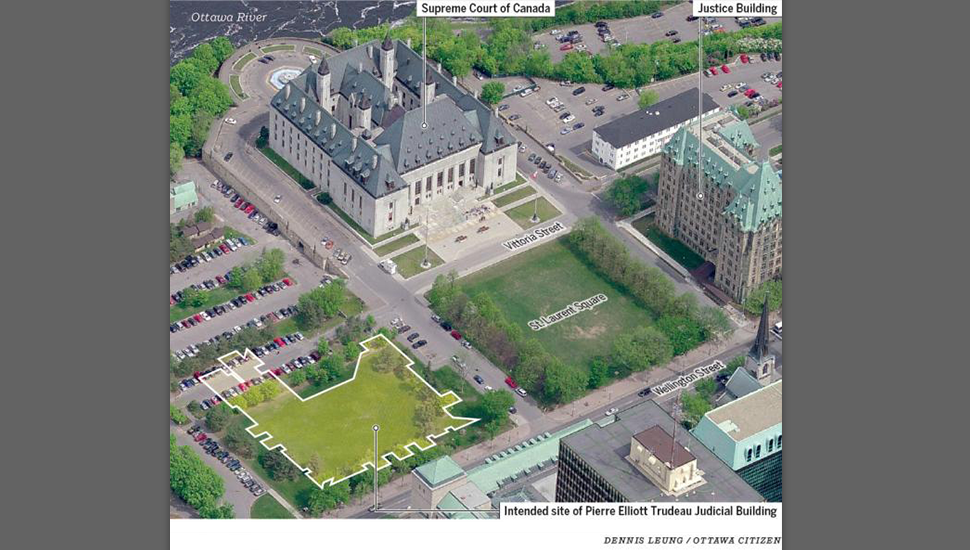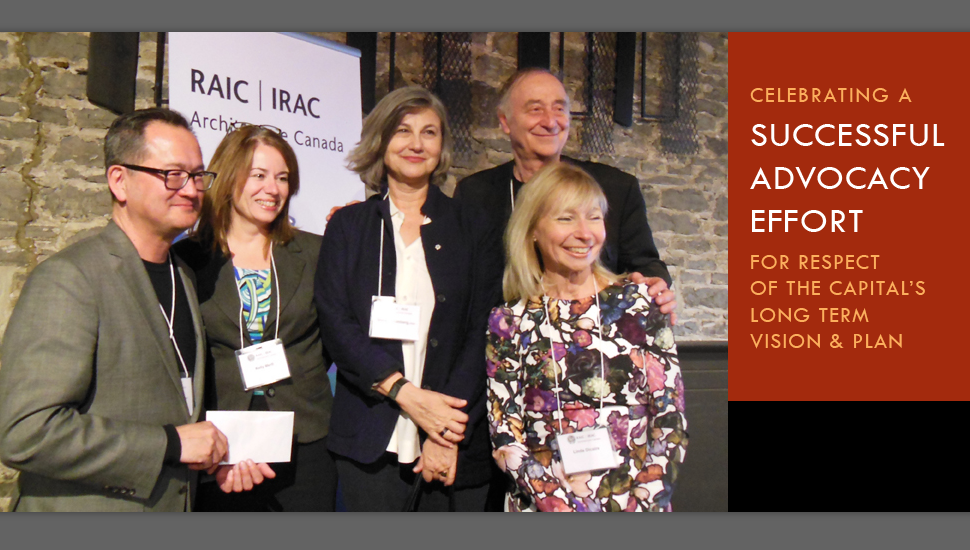49. The Judicial Triad
Construction: Supreme Court: 1939-1940 | Justice Building: 1935-1938 | 3rd Building in Triad: TBA
Architect: Ernest Cormier | Burritt and Horwood Architects | TBA
Location: 301 Wellington Street, Ottawa
The federal government’s official Long Term Vision and Plan for Ottawa’s Parliamentary and Judicial Precincts—dating back to 1920—has consistently earmarked undeveloped land adjacent to the Supreme Court of Canada for a judicial building. Its construction will create a "Judicial Triad" of stand-alone buildings to mirror the configuration of the "Parliamentary Triad" made up of the Centre Block, East Block and West Block on Parliament Hill.
In 2010, the National Capital Commission (NCC) allocated a site west of the Garden of the Provinces and Territories at Bay and Wellington streets, for a National Memorial to the Victims of Communism.
Without consultation, the federal government decided in 2013 that a large-scale memorial would instead be constructed on the land adjacent to the Supreme Court Building—long-reserved for a federal building to complete the Triad.
In September 2014, Ottawa architect Barry Padolsky wrote an open letter to then Prime Minister Stephen Harper, imploring him to rethink the monument’s location as it contravened the government’s Long Term Vision and Plan (LTVP).
In December 2014, Shirley Bloomberg, founding partner of KPMB Architects and part of the seven-member jury that evaluated the finalists for the design of the proposed memorial, publicly expressed her “massive problem” with the chosen site.
In February 2015, the Royal Architectural Institute of Canada (RAIC) issued a statement conveying its respectful request that the government reconsider its chosen site, pointing out that the LTVP “does not prescribe a monument on the contested site, but a suitably scaled building.”
In its own statement of February 2015, Heritage Ottawa supported the RAIC's position and further stated:
“The Supreme Court of Canada, designed by Ernest Cormier, and the Justice Building designed by Burritt and Horwood Architects—the two existing buildings in the triad—are handsomely designed structures that make important contributions to Canada’s architectural heritage. On completion of a third building in accordance with long standing plans, the judicial precinct will have significance for future generations as a reflection of Canada’s justice system and the democratic ideals on which that system is based.”
Heritage Ottawa made extensive use of its website to help create public awareness and support, and hosted a lecture by experts Robert Allsopp and Lyette Fortin to present the Long Term Vision and Plan in greater detail.
During the following months, a coalition of supporters joined Heritage Ottawa and the RAIC in urging the government to reconsider the site of the monument, including the Canadian Institute of Planners, former presidents of the Canadian Bar Association, the Ontario Association of Architects, and the Canadian Society of Landscape Architects.
The controversy attracted national coverage in The Globe and Mail, Maclean’s magazine, and even The New York Times, leading to thousands of citizens across the country expressing their objections.
In June 2015, the NCC's Board decided to commence with decontamination of the site in preparation for the memorial's construction. Heritage Ottawa and the RAIC, along with architects Barry Padolsky and Shirley Blumberg, responded by filing a Federal Court action against the Attorney General of Canada and the NCC, seeking an injunction to prevent ground-breaking on the site.
The lawsuit alleged that the NCC violated its procedures for public consultation and acted against the National Capital Act in proceeding with site preparation “despite having no finalized and approved design for the memorial."
In December 2015, the newly elected Liberal government reversed the previous government’s decision to erect a memorial adjacent to the Supreme Court.
In January 2016, the NCC Board rescinded its previous approvals for the site. Heritage Ottawa, the RAIC and its fellow litigants immediately discontinued the court case against the NCC.
After covering legal fees, the remaining $8,000 of funds raised for legal costs were donated to United Way Ottawa, to assist with the resettlement of Syrian refugees.
In May 2017, the Department of Canadian Heritage announced the selection of a new, smaller-scale memorial to be built at the west side of the Garden of the Provinces and Territories. Construction of the winning design, created by Toronto architect and artist Paul Raff and team, is expected in 2018.
Update: Construction Begins on Rejigged Victims of Communism Memorial | Ottawa Citizen, December 27, 2019
